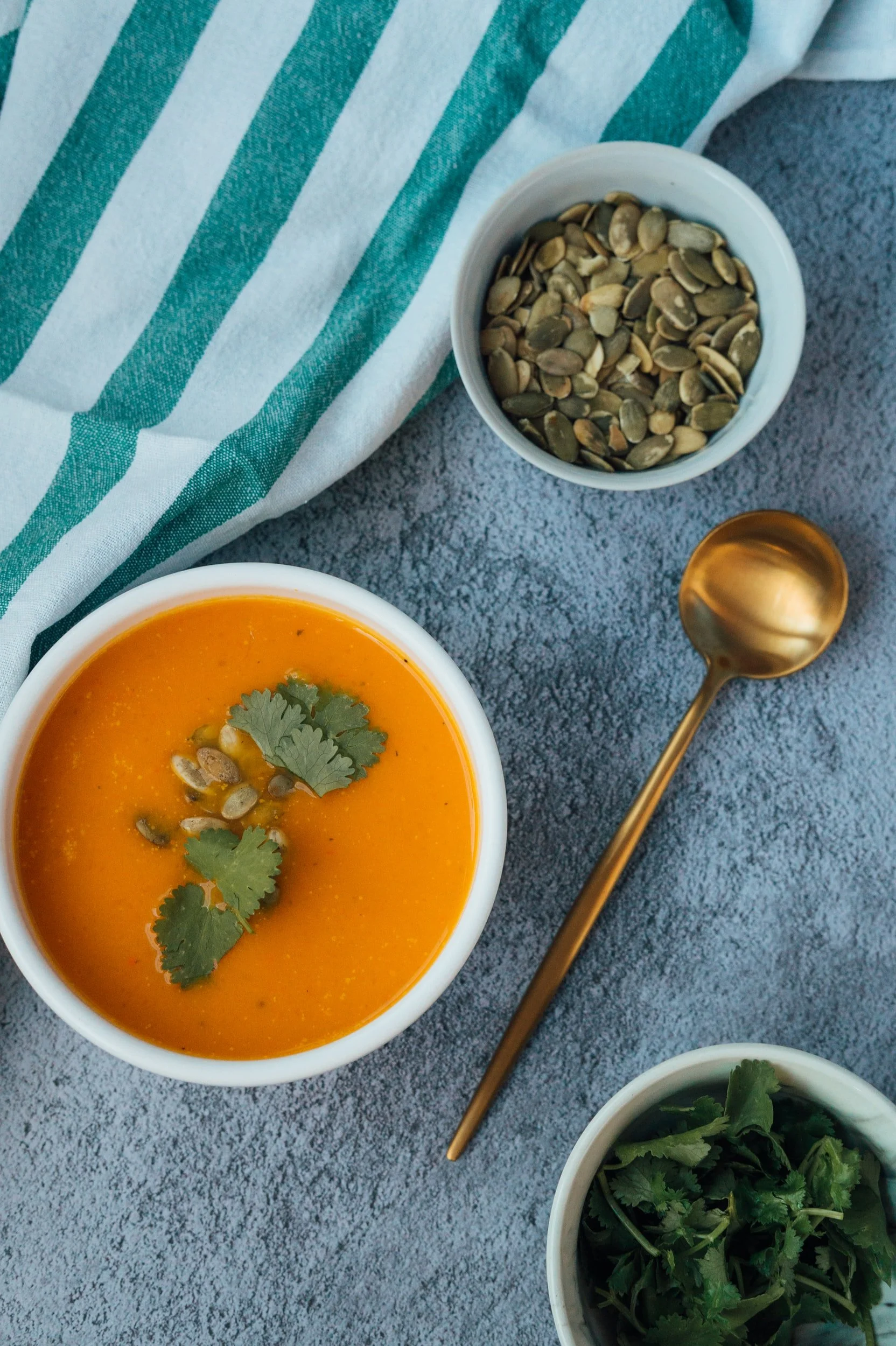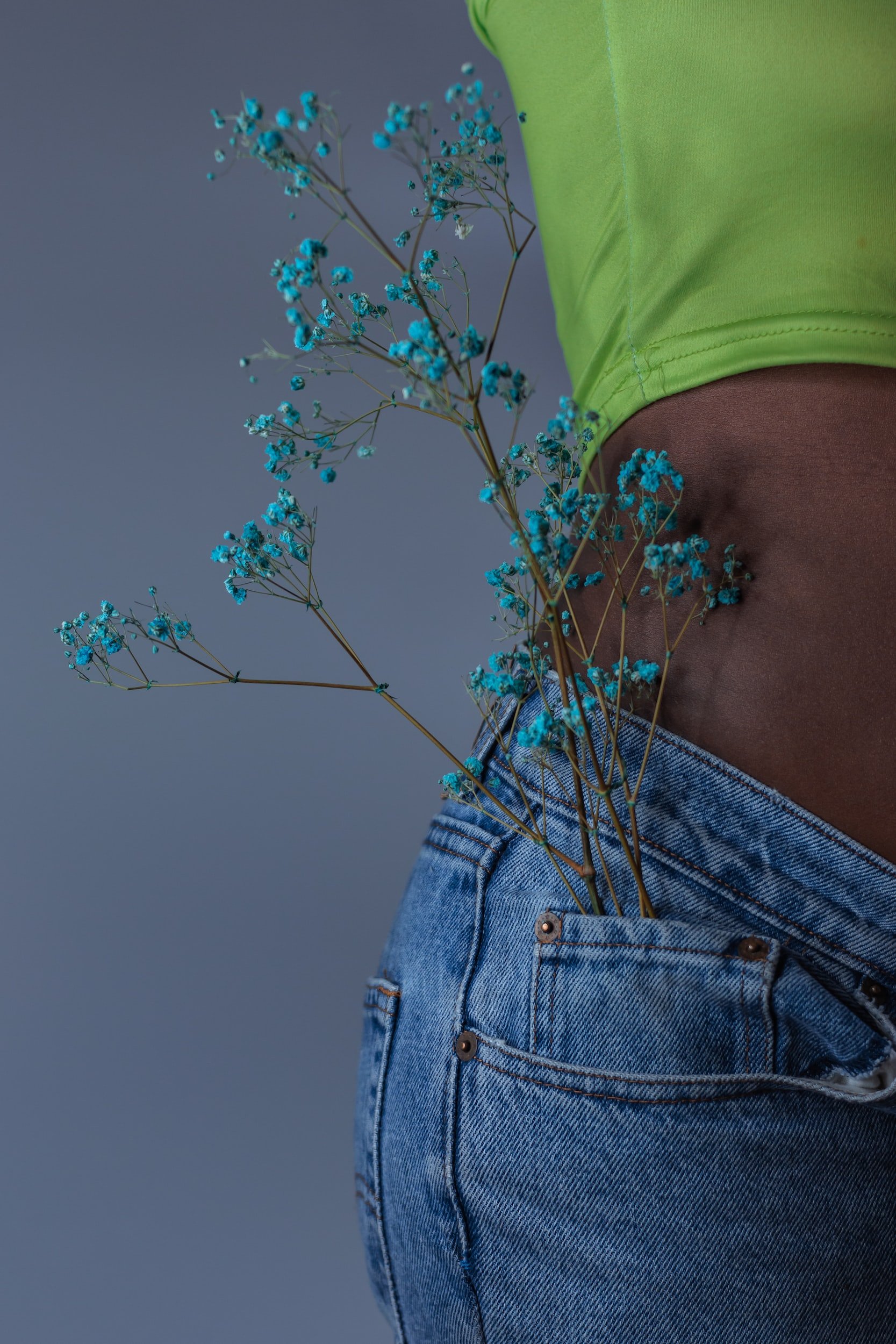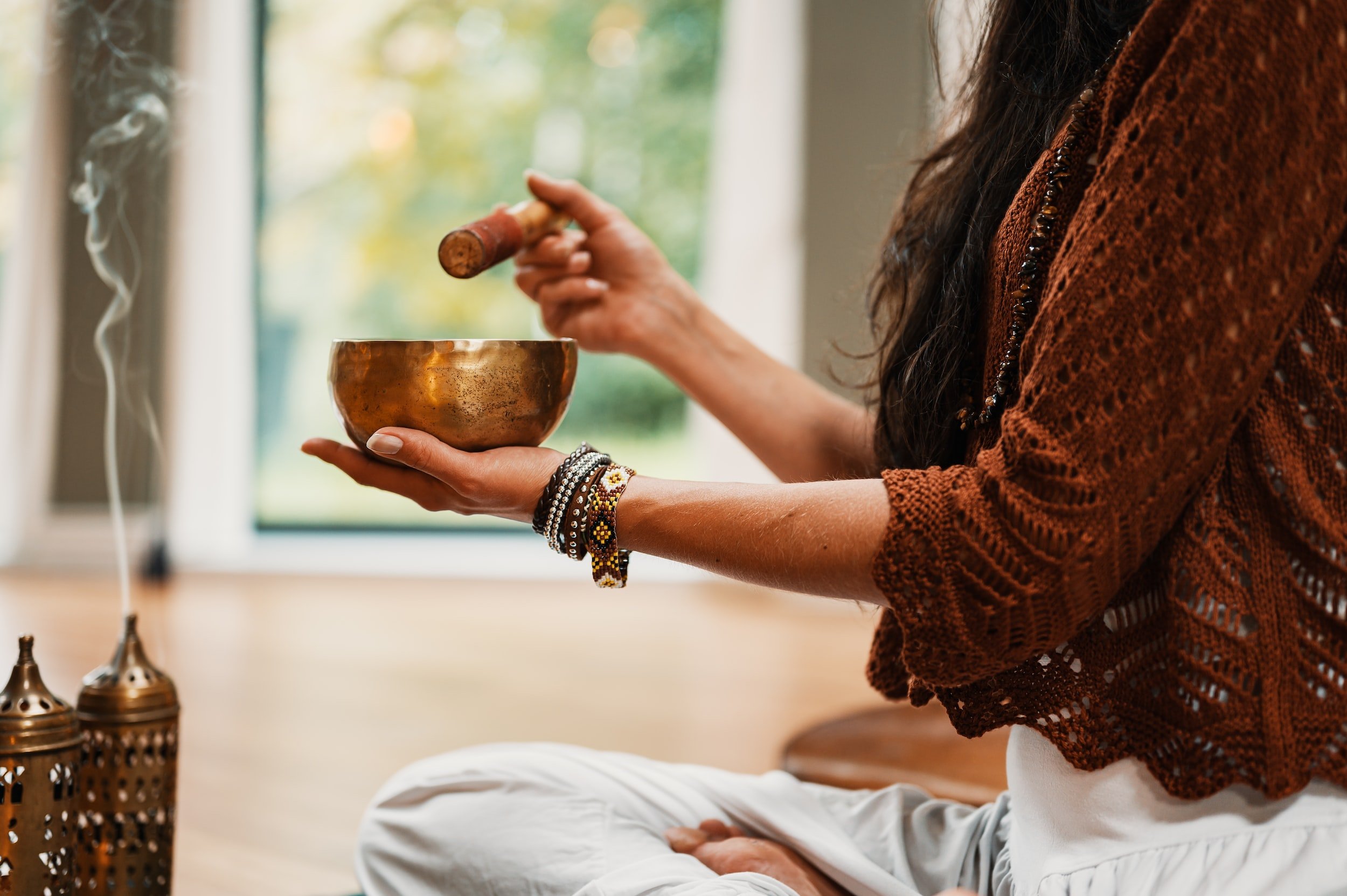To be alive is miraculous. Our ability to see, touch, hear, smell, and taste brings the world into a vibrant focus, a focus that Ayurveda uses to guide us towards personal balance and wellness. In Ayurveda, the senses—sound, touch, sight, taste, and smell—are referred to as the Tanmatras. The corresponding sense organs—ears, skin, eyes, tongue, nose—are the Jnanendriyas or the 'organs of knowing. The sensations received by the sense organs are then converted into perception.
Ayurveda teaches that the human mind and body are greatly influenced by our environment. Everything we take in with each of the 5 senses alters the state of our health and sense of balanced well-being. Health isn't just about diet and exercise. We rely on our senses to perceive and feel the world, it may be a sensitivity to light or vibration of touch or the very molecules that make up scents and tastes. This stimulus sends electrical signals that travel via the nervous system to specific areas in the brain. These signals are then interpreted into fully formed perceptions.
The senses are our doorways to the world around us (and inside us). If your senses of taste and smell are stronger, your eyesight is sharper, your hearing is more refined, and your sense of touch is heightened, you can experience all the pleasures of being in a human body with greater presence and clarity. Because of the humdrum of our modern daily lives, we suffer from both sensory deprivation and sensory overload. Ayurveda offers a way to take care of our 5 senses through self-care practices along with mindfulness practices that will help one connect more directly with their sense perceptions, bringing them fully in to the present moment.
TASTE
Tasting is an immediate sense. The tongue can identify the 6 tastes, sour, salty, bitter, pungent, and astringent. We generally think of “flavor” as a product of our taste buds. But in truth, flavors arise through a unique blend of smell and taste, something known as chemosensation—our body’s ability to synthesize chemicals into specific smells and tastes. It’s because of the intimate connection between smell and taste that when we smell a pie cooking in the oven, we can almost taste it.
TRY THIS
Using a tongue scraper can help remove this buildup, as well as: Improve your sense of taste. Research suggests using a tongue scraper twice daily can improve your sense of taste. Your tongue may be able to better distinguish between bitter, sweet, salty, pungent, astringent, and sour sensations.
How to do it: First thing in the morning, before you drink water or brush your teeth, scrape your tongue with an Ayurvedic tongue scraper or a metal spoon
Mindfulness Practice
Try to eat four very different foods, such as a nut, a piece of broccoli, a spoonful of yogurt, maybe a noodle or lettuce. If you would like, close your eyes and try to discriminate the tastes as well as the texture as you are eating each item. You can take this practice even further and try to discriminate the taste from the smell. Are you able to separate the two, or do you have a unified experience between the two senses?
Smell
The sense of smell operates across space—you can smell a cup of tea brewing from across the room, or something cooking in the kitchen from the bedroom. Smell delight us across the seasons, the smell of wet leaves in the fall, the smell of fresh-cut grass in the spring or mulled wine in the winter. Smell reaches across time, connecting us to the past, as well as providing warning, such as if food has gone bad or if something is burning.
TRY THIS
According to Ayurveda, the delicate skin of the nasal passages and the Eustachian tubes of the ears require lubrication to stay healthy, balanced, and protected, especially in the colder months. This technique is known as Nasya.
Nasya is a simple procedure where 3-5 drops of an herbalized oil, usually sesame or olive oil, are applied into the nostrils and sniffed. This lubricates the nasal mucosa, leaving them nourished and protected.
How to do it: First off, please note, that Nasya is best done on an empty stomach and is best not to apply before bed to prevent dripping into the larynx. After application, it is normal to taste the oil in the back of the mouth or to have some oil drip out of your nose for a minute or two afterward.
In addition to happy sinuses and a better sense of smell, Nasya has some unexpected benefits like greater clarity of mind and a calmer nervous system.
Warm the oil by putting oil in the dropper and holding it under hot water until it is just above body temperature (test temperature on forearm). You can also warm the whole bottle in a cup of hot water.
Tip your head back as far as possible and exhale fully. If you like, you can lay on the edge of a bed or sofa. Drop 3-5 drops of oil into each nostril and sniff deeply. Start with 3 drops and increase if comfortable.
Mindfulness Practice
Put a small amount of various loose herbal teas in small bowls, close your eyes and smell each sample. If you would like, you could also do this with other foods and drink. Or simple kitchen herbs and spices. Take note of any emotions that arise, or feelings of simulation of serenity when using your sense of smell.
Sight
Our vision is considered to be the dominant sense. As much as 80% of what we learn comes through our eyes. A mindful approach to seeing is being in the present, without judgment, by taking a fresh look at the world. Our habitual patterning often leads to pigeonholing, limiting our vision, both literally and metaphorically. Now don’t take me the wrong way, habitual patterning is important for our brains to organize visual input, that is how we recognize what we see. What I am suggesting is to go beyond this for a moment, and instead of just recognizing an item, it might be worth seeing all the aspects of it, for example when looking at a flower, seeing its petals individually, feeling their softness, take in their scent. This is where mindfulness comes to play.
TRY THIS
According to Ayurveda, the eyes are a seat of pitta, so they’re prone to inflammation—especially for parents and kids who spend a lot of time on screens. A bit of cool rose water or Triphala water keeps the eyes cool and refreshed.
How to do it: Simply splash some cool water directly into your eyes or squirt a few spritzes of pure rosewater or Triphala water into them. Blink a few times, and enjoy the cooling sensation.
Mindfulness Practice
We’ll begin by starting with our body, so find a comfortable seat. Place your feet on the floor, your hands on your thighs, and sit upright in an alert and comfortable. Take a few deep breaths in, then Move your attention to your sense of sight. Open your eyes for a moment, and notice your macro vision and what’s happening in your wide vision, all around the room.
Notice what’s happening way out beyond your immediate sights, such as the wide-open space, the sky, the trees, and the walls that are far from you. Notice colors and textures, movement, and stillness. Notice your peripheral vision, what’s happening right out from your sides that you’re not really looking at but you can kind of sense are there. You’re expanding your capacity to see by focusing your attention on this sense.
Come in a little more closely to your immediate surroundings, not too close but sort of halfway. Notice colors, textures, objects, people, movement, stillness, or light. For example, how the light is landing on different objects, or the floor, or the walls, or the trees. No need to label what you’re seeing, just notice.
Now bring it in even closer. Notice your immediate surroundings right in front of you, right around the floor in front of you. The walls, the sky, or the way the light is hitting the world in your immediate surroundings. Journal your experience.
Sound
Sound is created by a series of compression waves that travel outward from the source. These waves are carried via a medium and are picked up and converted into electrical signals in the inner ear, by then which are passed to the brain. The sense of sound gives us information about the environment and is an integral part of communication. Sound is an emotional experience, it is closely linked to both joy and sorrow, think about all the love songs that have been written, there is a reason we express our emotions through music.
TRY THIS
Applying a few drops of oil into the ears can lubricate any accumulated wax so that it doesn’t affect your hearing.
How to do it: Lie down on your left side, put a few drops of oil into your right ear, and rest for a few minutes to let it seep in. Then roll over to your right side, put a few drops in your left ear, and rest again briefly before getting up.
Mindfulness Practice
Focus on the sounds... Sound is the perfect object of mindfulness, as we hear only the sounds of this moment. We don't hear the sounds of the past or of the future. Sound can be utilized as your anchor to the present moment by simply noticing the soundscapes around you. We can learn to pay more attention to this soundtrack of life by taking a sound walk, where you focus on what you are hearing. Find a place where you can stop and listen, close your eyes and listen to the sounds around you. Take note of if the sounds create anxiety in you, or if they allow you to ease the stress of the day.
Touch
The use of touch in Ayurveda has an extremely profound effect on the body, mind, and emotions. Touch generates feelings of well-being, relaxation, emotional harmonization, security, comfort, belonging, and stability. Our sense of touch is direct, You can’t touch a pillow across the room and feel its softness, or feel the sones on the river bed with your shoes on. When we touch something, the receptors in our skin transmit information via the nervous system to the brain. Our fingers, hands, toes, and feet are particularly sensitive to touch, yet we feel with our whole body.
TRY THIS
Sneha, the Sanskrit word for “oil,” is also the word for “love.” “So abhyanga,” or Ayurvedic oil massage, “is self-love at its best.” Abhyanga nourishes our tissues and our sense of touch in order to balance prana flow, which encourages a long and luxurious life. The revitalized tissue is also more enduring, stronger, and ultimately better equipped to resist disease or injury! Not to mention, the resulting reduction of stress
How to do it: Choose an oil blended especially for your constitution or get a good organic cold-pressed base oil. Keep your oil in a bottle or jar in your bathroom. You can warm it if you like by soaking it in warm water in the sink or apply at room temperature.
Begin at the feet, making circular motions around the joints and up-and-down strokes on the long bones and torso. You can also apply the oil to your scalp if you intend to wash your hair. Once it’s applied, let it stay on for [at least] a few minutes before you get into the shower or tub.
Once in the warm water, don’t soap off the oil—allow the warmth of the shower to drive it into your skin. If you applied the oil to your hair, you can soap and wash your hair.
Mindfulness Practice
A great exercise to explore your sense of touch is to play with the boundary between touching and not-touching your skin. For starters, take the index finger of one hand and brush it against the other arm. Alternate between pressing firmly into your arm, and then releasing, brushing your arm ever more slightly until you can’t feel your finger. As you move your hand away, try to pinpoint at exactly what point you are no longer touching your arm. Can you still ‘feel’ your finger, even when you aren’t touching your arm? You could also practice this exercise with other objects, or a partner.
Disclaimer
The sole purpose of these articles is to provide information about the tradition of Ayurveda. This information is not intended for use in the diagnosis, treatment, cure or prevention of any disease






















